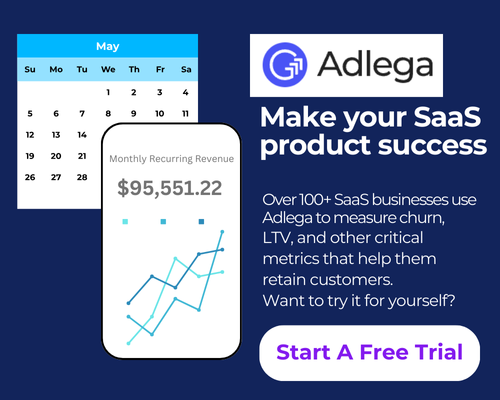
In today’s SaaS landscape, keeping customers happy and preventing them from leaving your platform is just as important as acquiring new ones.
This article will dive deep into Customer Health Score (CHS) – a powerful metric that helps you understand how likely your customers are to stick around, grow their usage, or potentially leave your product.
We’ll explore what it is, why it matters, and how it differs from other customer metrics you might be familiar with.
The Fundamentals of Customer Health Score
A Customer Health Score is a numerical representation of your customer’s relationship with your product or service. Think of it as a wellness check-up for your customer relationships. Just like a doctor measures various vital signs to assess your health, a Customer Health Score looks at multiple indicators to evaluate how “healthy” your customer relationship is.
For example, if you’re running a project management SaaS like Asana or Monday.com, a healthy customer might be one who logs in frequently, creates new projects regularly, invites team members, and pays their bills on time. On the flip side, an “unhealthy” customer might be logging in less frequently, using fewer features, and taking longer to respond to your communications.
Unlike other customer metrics you might be familiar with, CHS is unique in several ways. While Net Promoter Score (NPS) asks customers if they would recommend your product, and Customer Satisfaction Score (CSAT) measures happiness with specific interactions, CHS takes a more comprehensive view by looking at actual customer behavior and engagement patterns.
Let’s look at how CHS differs from CSAT specifically: Customer Satisfaction Scores typically measure a customer’s happiness at specific moments, like after a support interaction or completing onboarding. While this feedback is valuable, it only provides a snapshot of sentiment at particular touchpoints. Think of CSAT like taking a photo – it captures a moment in time. In contrast, CHS is more like recording a video – it continuously monitors various aspects of the customer relationship, providing a more complete picture of the customer’s overall experience and engagement with your product over time.
Why CHS Matters for Subscription Businesses
In the subscription economy, your business success depends on customers continuing to use and pay for your service month after month.
A software company like Mailchimp, for instance, doesn’t just need customers to sign up – they need them to consistently send emails, maintain good deliverability rates, and gradually increase their subscriber count.
This ongoing relationship makes CHS particularly valuable for several reasons:
First, it helps predict churn before it happens. When a customer’s health score starts declining, it’s like an early warning system telling you there might be trouble ahead. For instance, if a customer who usually sends 100,000 emails monthly suddenly drops to 20,000, their health score would reflect this change, alerting your team to investigate and potentially intervene.
Second, it identifies growth opportunities. Customers with consistently high health scores are often your best candidates for upselling or expanding their usage. Think of a company using your accounting software – if they’re regularly using advanced features, staying within their subscription limits, and frequently accessing reports, they might be ready to upgrade to a higher tier.
Components of a Customer Health Score
Your Customer Health Score should incorporate various data points that indicate the strength of your customer relationship. Let’s break down each major component:
Product Usage Metrics
These metrics show how actively and effectively customers are using your product.
For a video conferencing tool like Zoom, key usage metrics might include:
The number of meetings hosted per month, total meeting minutes, number of unique participants, and use of advanced features like breakout rooms or recording. A customer consistently hitting these metrics would contribute positively to their health score.
Financial Indicators
Financial health is a crucial component of CHS. This includes payment history, contract value, and any changes in subscription level.
For example, a customer who recently upgraded from a basic to a premium plan and pays consistently on time would have strong financial indicators in their health score.
Customer Engagement Factors
Engagement goes beyond just using your product. It includes how customers interact with your company across all touchpoints.
Take Slack as an example – engagement might include whether customers read product updates, participate in beta testing, or attend webinars. Strong engagement often indicates a customer who sees value in your product and is invested in making it work for their team.
Customer Success Interactions
The quality and frequency of interactions with your customer success team can tell you a lot about account health. These interactions might include onboarding completion, response rates to check-ins, and participation in quarterly business reviews. A customer who actively engages with their success manager and implements their recommendations typically shows better health indicators.
The Science Behind Health Scoring
Creating an effective health score isn’t just about collecting data – it’s about understanding what that data means for your specific business context. Different types of indicators work together to give you a complete picture:
Leading vs. Lagging Indicators
Leading indicators are early warning signs that can predict future outcomes. For a marketing automation platform like HubSpot, a leading indicator might be a decrease in the number of marketing campaigns created or emails sent. These changes could signal potential problems before they result in the customer actually churning.
Lagging indicators, on the other hand, tell you what has already happened. Things like missed payments or support ticket escalations are lagging indicators – they show problems that have already manifested.
Correlation with Customer Retention
Not all metrics carry equal weight in predicting customer success. For example, a project management tool might find that the number of active projects is more predictive of retention than the number of user logins. Understanding these correlations helps you weight different factors appropriately in your health score calculation.
Impact on Business
A well-implemented Customer Health Score system can transform how you operate your SaaS business. Let’s look at specific ways it impacts different areas:
In terms of customer churn, companies that effectively use health scores can often predict and prevent up to 50% of potential churns by identifying at-risk accounts early.
For instance, a company like Dropbox might notice that customers who don’t integrate their service with other tools within the first 30 days are more likely to churn, allowing them to proactively address this through targeted onboarding.
Regarding revenue growth, healthy customers are typically more likely to upgrade their subscriptions and recommend your product to others.
Take DocuSign as an example – they might notice that customers with high health scores are 3x more likely to purchase additional user licenses within their first year.
Common Misconceptions
While Customer Health Scores are powerful, it’s important to understand their limitations and common misconceptions:
First, a high health score doesn’t guarantee a customer will stay. External factors like budget cuts, company acquisitions, or strategic shifts can lead even highly engaged customers to leave.
For example, a customer might love your social media management tool, but if their company gets acquired and the parent company uses a different solution, they might have to switch regardless of their satisfaction level.
Second, health scores aren’t static – they require regular calibration and updating. This is another key difference from CSAT scores, which remain valid as point-in-time measurements. While a customer might give you a perfect CSAT score after a successful support interaction, their health score could still be declining due to decreased product usage or missed payments. As your product evolves and you learn more about what drives customer success, your scoring model should evolve too. A metric that was highly predictive of customer retention last year might be less relevant as your product and customer base mature.
Conclusion
Understanding Customer Health Score is crucial for any SaaS founder looking to build a sustainable, growing business. It provides invaluable insights into customer relationships and helps predict future behavior. In our next article, we’ll dive into the practical aspects of implementing a Customer Health Score system in your SaaS business, including specific steps, tools, and best practices to get started.

Leave a Reply